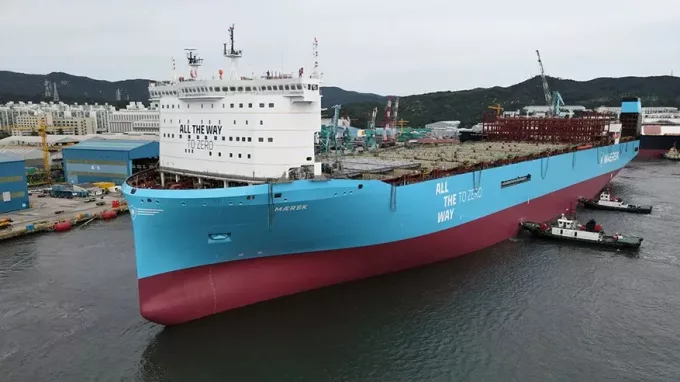Colombo capacity crunch adding to container line woes
Container lines are facing severe capacity problems at Sri Lanka’s Colombo port, as they reshuffle ...

Ammonia, not methanol, will be the green fuel of the future, claimed Copenhagen Infrastructure Partners, an investment fund located close to compatriot and methanol-advocate Maersk – this week.
Responsible for a green exchange traded funds (ETF) investment portfolio worth billions, CIP’s VP, Jens Jødal Andersen, told media the biogenic feedstock for methanol – Maersk’s chosen future fuel – would be in short supply by around 2040.
He said: “If a developer like us were to insist in a methanol production facility, we’re looking at a 15 to 20-year investment horizon. There may be big paper mills in Europe where you can find these biogenic sources… but you need to transport it to South America, because that’s where the wind is, which adds significantly to the price of the fuel.”
On the other hand, green ammonia, is made with nitrogen, separated using the Haber-Bosch process, and hydrogen, electrolysed from water. Nitrogen makes up around 79% of the atmosphere and seawater is abundant, meaning these raw materials will not run out.
“The shipping industry consumes 300m tonnes of heavy fuel,” Mr Andersen said, pointing out that e-fuels have a lower energy content “more than 600m tonnes of ammonia or methanol”.
Therefore, CI ETF was pursuing a strategy of setting up ammonia production facilities in Western Australia, Morocco, South America’s Patagonia region and “a little spot in Mexico”, said Mr Andersen, “literally in the middle of nowhere” where, wind and solar energy would be used to generate ammonia.
The Loadstar has discussed the pros and cons of ammonia before. Zero-emissions at the funnel, and in production if it is made using green energy, as Mr Andersen suggests, and would be an excellent choice of fuel to support a decarbonisation effort by shipping, and a favourite of many lines.
However, rather a major caveat of green ammonia is its toxicity, which experts say could lead to massive damage to the local environment if it leaked into the ocean – similar to the expected effect from the sunken Rubymar in the Red Sea.
“We had a survey two years ago on an accident by an oil or ammonia spill,” said David Dupont-Mouritzen, Power-to-X project director at CIP. “Ammonia is very toxic, so the impact on marine life is huge, but the long-term effect was larger from the fossil accident than the ammonia accident, in respect to marine life. It just dissolves in water.”
Comment on this article